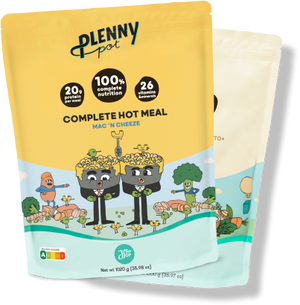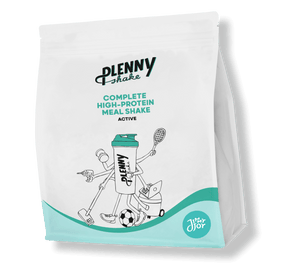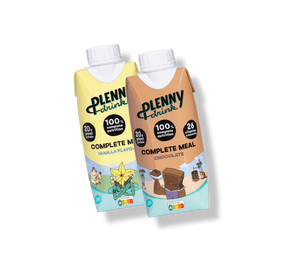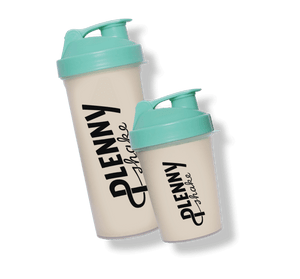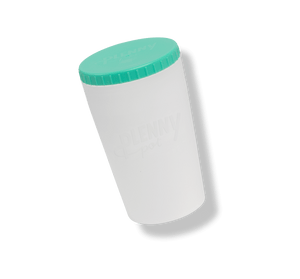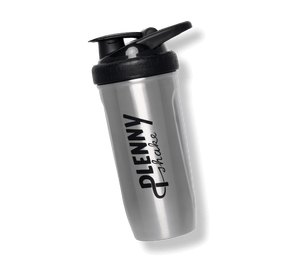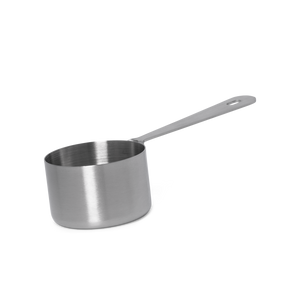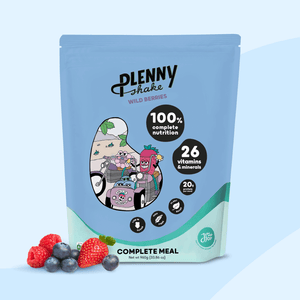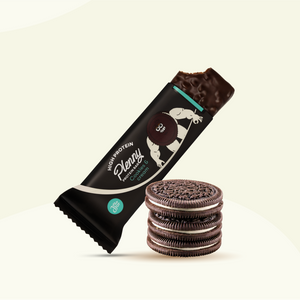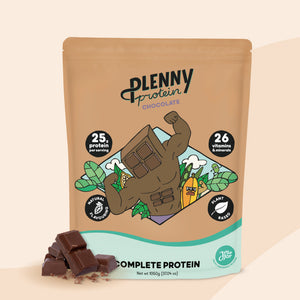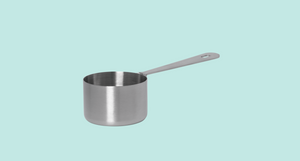They might sometimes get overlooked because of their big brother ‘Macronutrients’, but micronutrients (vitamins, minerals and trace elements) are an important part of the nutritional palette and have many indispensable health benefits. But for a nutrient to live up to its expectations, it needs to reach a specific ‘point of absorption’ in the body. This concept is known as “bioavailability”, and it basically refers to the amount of the nutrient that gets absorbed by the intestines, and ultimately becomes available for biological activity in cells and tissues[1]. Makes sense, right?

At Jimmy Joy we do not only take the quantity, but also the quality of these compounds into account, because we want you to be able benefit as much as possible from the healthy properties of these vitamins, minerals and trace elements. So keep on reading to find out all about the micronutrients in our meals, and their bioavailability!
Quickjump to:
- Vitamin A
- Vitamin D
- Vitamin E
- Vitamin K
- Vitamin C
- Thiamin
- Riboflavin
- Niacin
- Vitamin B6
- Folic acid
- Vitamin B12
- Biotin
- Pantothenic acid
- Potassium
- Chloride
- Calcium
- Phosphorus
- Magnesium
- Iron
- Zinc
- Copper
- Manganese
- Selenium
- Chromium
- Molybdenum
- Iodine
Vitamins
Vitamin A
Vitamin A is the name of the collective group of substances that have retinol activity. To determine the biological value of substances with vitamin A activity, it is compared to the biological value of retinol. All-trans retinol is the main source of vitamin A in western countries, which has a high bioavailability. But since this form of vitamin A comes from animal sources, we do not use it in our Plenny meals. The plant-derived form of vitamin A is B-carotene. However, the vitamin A activity of this form is relatively poor. More specifically: to get the same vitamin A activity of 1 mg retinol, 12 mg of dietary B-carotene needs to be consumed. Luckily, there are synthetic forms of retinol, like retinyl acetate or retinyl palmitate. These are widely used as a supplement. One International Unit (IU) of retinol is equivalent to 0.344 μg retinyl acetate and 0.548 retinyl palmitate. In other words, you need less retinyl acetate than retinyl palmitate to end up with the same vitamin A activity. Taking that into account, it probably won’t surprise you that we use vitamin A in the form of retinyl acetate for our micronutrient mix. [1–5]
Vitamin D
Vitamin D is the umbrella term for vitamin D2 (ergocalciferol) and vitamin D3 (cholecalciferol). The average vitamin D absorption from an average diet is about 80%, regardless of the form used. However, evidence suggests that the activity of vitamin D in the form of cholecalciferol (D3) is greater, which is why we use it for our meals. [6–8]
Vitamin E
Vitamin E may be added to foods and supplements in the form of d-α-tocopherol, dl-α-tocopherol, d-α-tocopheryl acetate, dl-α-tocopheryl acetate and d-α-tocopheryl acid succinate. Acetate and other esters are the most common form for fortification and are fully available. Therefore, vitamin E is added to our products in the form of dl-α-Tocopheryl Acetate. As with vitamin A, The United States Pharmacopeia (USP) has defined an IU for vitamin E to compare the activity of different forms to α-tocopherol, having the greatest activity. One IU was defined as equivalent to 0.45 mg α-tocopherol versus 1 mg all-rac-α-tocopheryl acetate. In general, the absorption of tocopherol from an average diet is about 75% and requires the presence of fat. [1,9,10]
Vitamin K
Vitamin K exists in two forms in the human diet: phylloquinone (vitamin K1) and a series of menaquinones (vitamin K2). The main differences between the forms of vitamin K are the half-life: a measurement of how long a compound stays in the body. Vitamin K1 remains in the body for only a few hours, similar to Vitamin K2 in the form of MK4. Vitamin K2 in the form of MK7, however, has a long half-life and can remain in the body for days, resulting in higher bioavailability. So guess which one we use...? You guessed it: Vitamin K2 in the form of MK7 [11,12]
Vitamin C
Vitamin C may be added to foods in the form of L-ascorbic acid, sodium L-ascorbate, calcium L-ascorbate, potassium L-ascorbate, and L-ascorbyl-palmitate. The most commonly used form is ascorbic acid, which is assumed to be highly bioavailable. In line with this, a recent study has shown that ascorbic acid bioavailability is equivalent in ascorbic acid tablets, orange juice, whole orange sections, and cooked broccoli. For this reason, we use it in our Jimmy Joy products. [13–17]
Thiamin
The vitamers of thiamine have equivalent activity and bioavailability. The most commonly used forms for supplements are thiamine mononitrate and thiamine hydrochloride. Although the bioavailability is considered equal, thiamine in the form of thiamine mononitrate is added to the products of Jimmy Joy! [1,18,19]
Riboflavin
Riboflavin can usually be found in foods as flavin adenine dinucleotide (FAD) and flavin mononucleotide (FMN) cofactors of proteins (80–90%), and less frequently in the form of riboflavin. Nevertheless, all forms have equivalent bioavailability. [1,20]
Niacin
There are several vitamers including nicotinic acid, niacinamide, NADH, NADPH, and bound forms of niacin. Also, for niacin it is the case that the principal vitamers have approximately equivalent bioactivity. Yet, NADH and NADPH are gastrically insatiable, which means that they can collapse after consumption and before accomplishing their task. Nicotinic acid and niacinamide have similar bioactivity, but nicotinic acid can have a remarkable side-effect: red flush. Even though we want you to glow, we have chosen for the form that does not have this effect, being niacinamide. [1,21,22]
Vitamin B6
The most commonly used form of vitamin B6 in supplements is pyridoxine. Pyridoxine hydrochloride (PN-HCl) is the most commonly used synthetic form for food fortification. Vitamin B6 has approximately equivalent bioactivity for the main B6 vitamers. Nevertheless, some reports show lower activity of pyridoxal and pyridoxamine than pyridoxine. Reason enough for us to enrich our meals with vitamin B6 in the form of pyridoxine hydrochloride. [1,22,23].
Folic acid
Natural folates from food have a lower and more variable bioavailability than folic acid. The bioavailability of food folate that naturally occurs is 50%, while the bioavailability of folic acid from fortified foods is approximately 85%. So, it can be argued that folic acid is higher in bioavailability than natural folates - which is why we use it for our meals. [24–26]
Vitamin B12
Vitamin B12, or cobalamin, and its principal sources are of animal origin. Currently, cyano-and hydroxocobalamin may be added to foodstuff. From these sources, we chose to add cyanocobalamin to our products; this is a stable form that the body easily converts to the active forms, methylcobalamin and 5-deoxyadenosylcobalamin, which on their turn can be utilized by the body. [1,22,27]
Biotin
Biotin exists in free forms (D-biotin) and protein-bound forms, such as biocytin. The common natural form (D-biotin) is highly available and has an incredibly high absorption rate, with almost complete absorption! In contrast, there is a lack of data on the absorption of protein-bound biotin from foods. Therefore, D-biotin seemed to be the best option for our products. [1,28,29]
Pantothenic acid
Little to no information is available on the bioavailability of pantothenic acid, yet values of 40% to 61% have been given for the absorption of food-bound pantothenic acid. Pantothenic acid may be added to foods in the forms of D-Calcium pantothenate, D-pantothenate, sodium or dexpanthenol, which show similar bioactivity. Nevertheless, D-calcium pantothenate is widely used because of its chemical stability and long product shelf life, unlike sodium pantothenate or free pantothenic acid. For this reason, pantothenic acid is present in our products in the form of D-Calcium Pantothenate! [1,22,30,31]
Minerals
Potassium
Potassium may be added to food in the forms of potassium-L-ascorbate, potassium iodide, potassium dihydrogen phosphate, potassium carbonate and potassium chloride and many others. In dietary supplements, potassium chloride is most frequently used. About 90% of the potassium in food is absorbed by the body, but unlike most micronutrients, little is known about the bioavailability in its different forms. We add potassium to our products in the form of potassium dihydrogen phosphate and potassium chloride. [32–35]
Chloride
No evidence about the bioavailability of chloride is available. Nevertheless, chloride may be added to food as sodium chloride (‘table salt’) and potassium chloride, of which the latter is added to our products. In healthy people, all forms of chloride are efficiently absorbed in the gut. [36,37]
Calcium
Calcium may be added to food in the form of calcium formate, calcium carbonate and calcium citrate, among others. These forms contain 30.8%, 40.0% and 24.1% of calcium by weight, respectively. There is conflicting evidence on the relative bioavailability of calcium, but the differences in absorption are too small to be considered significant. We chose to use calcium carbonate to fortify our products with, which has the highest percentage of calcium by weight. This form is absorbed most efficiently when taken with food, because calcium is dissolved by the gastric juices and gastric emptying is slowed down. This is also the case in a Plenny meal! [38–42]
Phosphorus
The absorption of phosphorus depends on both the total amount and the type of phosphorus in the diet. The type of phosphorus can vary from organic to inorganic, and animal versus plant-derived. In general, 55-80% of the phosphorus intake is efficiently absorbed. The availability of phosphate salts is approximately 70%, while the availability of other forms is unclear. Jimmy Joy meals contain a combination of phosphate salts (potassium dihydrogen phosphate) and phosphorus in the form of Magnesium Phosphate Tribasic Pentahydrate FCC and Ferric Pyrophosphate to ensure that all your needs are met. [43–45]
Magnesium
The absorption of magnesium from different forms generally varies between 40-50%, with forms that dissolve well in liquid appearing to be absorbed better than insoluble forms. Absorption may be inhibited by the presence of phytic acid and phosphate, but on the other hand enhanced by the fermentation of soluble dietary fibres (which is present in our products). Still, it’s unclear whether these interactions still apply with an adequate intake. The unabsorbed amounts are nothing to worry about, though! As much as 95% of that amount can eventually be reabsorbed by the kidneys in case of a magnesium deficiency. The form of magnesium in our products, Magnesium Phosphate Tribasic Pentahydrate FCC, contributes to both the phosphorus and magnesium content in our meals. [46–50]
Iron
Iron in food can be present in the form of heme- and non-heme iron. Of these types, heme iron is absorbed more efficiently. This is due to specific transporters in the body that help transport this form more easily. Unfortunately, the major contributors of heme iron are animal products. Nevertheless, iron absorption can be improved by enrichment, which can be carried out by adding substances such as iron(II) carbonate, ferric sodium phosphate and ferric pyrophosphate. The latter has a high bioavailability of 83-94%. Another important advantage of ferric pyrophosphate is that, unlike other forms, it does not cause any change in the taste and colour of food. These qualities are why we use this form to fortify our meals, so we can provide you with the proper amount of iron! [51–59]
Zinc
The bioavailability from dietary zinc is assumed to be 20% for predominantly vegetarian diets and 30% for diets rich in animal products. Nevertheless, foods can be enriched by adding, for example, zinc citrate, zinc gluconate and zinc oxide. Unlike zinc that naturally occurs in food, research has not determined whether there are differences between forms of zinc in terms of absorption, bioavailability, or tolerability. However, a recent study found that zinc absorption was similar for zinc citrate and zinc gluconate, and lower for zinc oxide. We use zinc gluconate for our Plenny-meals. [60–62]
Trace Elements
Copper
Copper may be added to food in the forms of copper lysine complex, cupric carbonate, cupric citrate, cupric gluconate, and copper sulphate. However, there are no studies that have compared the bioavailability of these forms in the human diet. In contrast, bioavailability in animal feed is high for copper sulphate and acetate and low for carbonate. We add copper to our meals in the form of copper sulphate. [63–66]
Manganese
Dietary manganese is absorbed poorly. More specifically, only about 3-4% of dietary manganese is absorbed. The degree of absorption depends on the form, namely manganese in meat and fish is better absorbed than that in legumes. Moreover, manganese can be added to enrich foodstuff, in the forms of manganese salts (manganese carbonate, manganese chloride, manganese citrate, manganese gluconate, manganese glycerophosphate and manganese sulphate). Nevertheless, no data are available on the relative bioavailability of these forms. We add Manganese to our meals in the form of manganese sulphate. [67–70]
Selenium
Selenium may be added to food in the form of sodium selenate, sodium hydrogen selenite, sodium selenite, L-selenomethionine and selenium-enriched yeast. Of these forms, selenomethionine is well-absorbed - over a range of 76-100%. Selenate is more efficiently absorbed than selenite, but a significant amount of absorbed selenate is then lost via urine. Sodium selenite, which we add to our products, is absorbed to a lesser extent, but is retained better! [70–78]
Chromium
Foodstuff can be fortified with chromium in the forms of e.g. chromium sulphate, chromium picolinate and chromium chloride hexahydrate. Dietary chromium absorption is considerably low, ranging from 0.4-2.5%, and this also applies to the other mentioned forms. Although research suggests that the proportion of chromium picolinate is absorbed is higher than other forms, there are some concerns about the toxicity. For this reason, we use chromium in the form of Chromium Chloride Hexahydrate, instead. [47,79–84]
Molybdenum
There are only two forms of molybdenum that can be added to food: ammonium molybdate (MoVI) and sodium molybdate (MoVI). No studies have examined or compared the bioavailability of these different forms, though. On average, a bioavailability of 75% is determined by EFSA. This value takes the possibility of varying bioavailability into account and is integrated with the determination of reference intake (RI) of molybdenum. In our products, molybdenum is added in the form of sodium molybdate. [85–88]
Iodine
Iodine may be added to foods in the form of e.g. sodium iodide, sodium iodate and potassium iodide, of which the latter is added to our Plenny meals. The existing evidence about both the bioavailability and the absorption of the different forms is limited. Nevertheless, a small study has shown that humans absorb potassium iodide almost completely, namely for 96.4%! [89,90]
Antinutrients and the Interaction between compounds
It is not just the quality of micronutrients that is important to consider, because some micronutrients interact with one another - both positively and negatively. For example, calcium limits the absorption of heme iron and nonheme iron, while vitamin C promotes the absorption of nonheme iron; Vitamin D ensures that calcium is properly absorbed and is needed to store calcium in the bones; a high intake of iron, zinc, molybdenum and vitamin C inhibits the absorption of copper; and high dietary iron levels are associated with lower manganese absorption. These different interactions have, of course, been taken into account when we calculated the necessary amounts of micronutrients in our Plenny meals! [17,40,41,53,60,64,68,86]
Click here to see our entire product range and benefit from a well-considered quality and quantity of all micronutrients.
Sources
- Gregory J. Accounting for differences in the bioactivity and bioavailability of vitamers. Food Nutr Res. 2012 Apr 2;56.
- Gilbert C. What is vitamin A and why do we need it? Community Eye Health. 2013;26(84):65.
- Micronutrients I of M (US) P on. Vitamin A [Internet]. Dietary Reference Intakes for Vitamin A, Vitamin K, Arsenic, Boron, Chromium, Copper, Iodine, Iron, Manganese, Molybdenum, Nickel, Silicon, Vanadium, and Zinc. National Academies Press (US); 2001 [cited 2020 Nov 2]. Available from: https://www.ncbi.nlm.nih.gov/books/NBK222318
- Scientific Opinion on Dietary Reference Values for vitamin A. EFSA J. 2015;13(3):4028.
- Woollard DC, Indyk HE. RETINOL | Properties and Determination. In: Caballero B, editor. Encyclopedia of Food Sciences and Nutrition (Second Edition) [Internet]. Oxford: Academic Press; 2003 [cited 2020 Nov 2]. p. 4952–7. Available from: http://www.sciencedirect.com/science/article/pii/B012227055X01018X
- Borel P, Caillaud D, Cano NJ. Vitamin D bioavailability: state of the art. Crit Rev Food Sci Nutr. 2015;55(9):1193–205.
- Lehmann U, Hirche F, Stangl GI, Hinz K, Westphal S, Dierkes J. Bioavailability of Vitamin D2 and D3 in Healthy Volunteers, a Randomized Placebo-Controlled Trial. J Clin Endocrinol Metab. 2013 Nov 1;98(11):4339–45.
- Šimoliūnas E, Rinkūnaitė I, Bukelskienė Ž, Bukelskienė V. Bioavailability of Different Vitamin D Oral Supplements in Laboratory Animal Model. Medicina (Mex) [Internet]. 2019 Jun 10 [cited 2020 Dec 19];55(6). Available from: https://www.ncbi.nlm.nih.gov/pmc/articles/PMC6631968/
- Scientific Opinion on Dietary Reference Values for vitamin E as α-tocopherol. EFSA J. 2015;13(7):4149.
- Haytowitz DB, Ahuja JKC, Thomas R, Nickle M, Roseland JM, Williams JR, et al. Composition of Foods Raw, Processed, Prepared USDA National Nutrient Database for Standard Reference, Release 27 [Internet]. Nutrient Data Laboratory, Beltsville Human Nutrition Research Center, ARS, USDA; 2015 [cited 2021 Jan 12]. Available from: https://data.nal.usda.gov/dataset/composition-foods-raw-processed-prepared-usda-national-nutrient-database-standard-reference-release-27
- Shearer MJ, Newman P. Metabolism and cell biology of vitamin K. Thromb Haemost. 2008 Oct;100(4):530–47.
- Schurgers LJ, Teunissen KJF, Hamulyák K, Knapen MHJ, Vik H, Vermeer C. Vitamin K-containing dietary supplements: comparison of synthetic vitamin K1 and natto-derived menaquinone-7. Blood. 2007 Apr 15;109(8):3279–83.
- Office of Dietary Supplements - Vitamin C [Internet]. [cited 2021 Jan 12]. Available from: https://ods.od.nih.gov/factsheets/VitaminC-HealthProfessional/
- Bates CJ. Bioavailability of vitamin C. Eur J Clin Nutr. 1997 Jan;51 Suppl 1:S28-33.
- Mangels AR, Block G, Frey CM, Patterson BH, Taylor PR, Norkus EP, et al. The bioavailability to humans of ascorbic acid from oranges, orange juice and cooked broccoli is similar to that of synthetic ascorbic acid. J Nutr. 1993 Jun;123(6):1054–61.
- Gregory JF. Ascorbic acid bioavailability in foods and supplements. Nutr Rev. 1993 Oct;51(10):301–3.
- Scientific Opinion on Dietary Reference Values for vitamin C. EFSA J. 2013;11(11):3418.
- Macek TJ, Feller BA, Hanus EJ. Pharmaceutical Studies with Thiamine Mononitrate. J Am Pharm Assoc Sci Ed. 1950 Jul 1;39(7):365–9.
- Office of Dietary Supplements - Thiamin [Internet]. [cited 2020 Dec 24]. Available from: https://ods.od.nih.gov/factsheets/Thiamin-%20HealthProfessional/
- Kohlmeier M. Riboflavin. In: Kohlmeier M, editor. Nutrient Metabolism [Internet]. London: Academic Press; 2003 [cited 2020 Dec 24]. p. 561–70. (Food Science and Technology). Available from: http://www.sciencedirect.com/science/article/pii/B9780124177628500818
- MacKay D, Hathcock J, Guarneri E. Niacin: chemical forms, bioavailability, and health effects. Nutr Rev. 2012 Jun;70(6):357–66.
- Institute of Medicine (US) Standing Committee on the Scientific Evaluation of Dietary Reference Intakes and its Panel on Folate, Other B Vitamins, and Choline. Dietary Reference Intakes for Thiamin, Riboflavin, Niacin, Vitamin B6, Folate, Vitamin B12, Pantothenic Acid, Biotin, and Choline [Internet]. Washington (DC): National Academies Press (US); 1998 [cited 2020 Aug 28]. (The National Academies Collection: Reports funded by National Institutes of Health). Available from: http://www.ncbi.nlm.nih.gov/books/NBK114310/
- Wozenski JR, Leklem JE, Miller LT. The metabolism of small doses of vitamin B-6 in men. J Nutr. 1980 Feb;110(2):275–85.
- Dietary Reference Values for folate [Internet]. European Food Safety Authority. 2014 [cited 2021 Feb 9]. Available from: https://www.efsa.europa.eu/en/efsajournal/pub/3893
- Ohrvik VE, Witthoft CM. Human Folate Bioavailability. Nutrients. 2011 Apr;3(4):475–90.
- CDC. Folic Acid [Internet]. Centers for Disease Control and Prevention. 2020 [cited 2021 Feb 9]. Available from: https://www.cdc.gov/ncbddd/folicacid/index.html
- Scientific Opinion on Dietary Reference Values for cobalamin (vitamin B12). EFSA J. 2015;13(7):4150.
- Scientific Opinion on Dietary Reference Values for biotin. EFSA J. 2014;12(2):3580.
- Zempleni J, Mock DM. Bioavailability of biotin given orally to humans in pharmacologic doses. Am J Clin Nutr. 1999 Mar;69(3):504–8.
- Scientific Opinion on the safety and efficacy of pantothenic acid (calcium D-pantothenate and D-panthenol) as a feed additive for all animal species based on a dossier submitted by Lohmann Animal Health. EFSA J. 2011;9(11):2409.
- Scientific Opinion on Dietary Reference Values for pantothenic acid. EFSA J. 2014;12(2):3581.
- Stone MS, Martyn L, Weaver CM. Potassium Intake, Bioavailability, Hypertension, and Glucose Control. Nutrients [Internet]. 2016 Jul 22 [cited 2021 Feb 9];8(7). Available from: https://www.ncbi.nlm.nih.gov/pmc/articles/PMC4963920/
- Turck D, Bresson J-L, Burlingame B, Dean T, Fairweather‐Tait S, Heinonen M, et al. Dietary reference values for potassium. EFSA J. 2016;14(10):e04592.
- Office of Dietary Supplements - Potassium [Internet]. [cited 2021 Feb 9]. Available from: https://ods.od.nih.gov/factsheets/Potassium-HealthProfessional/
- Kalium | Voedingscentrum [Internet]. [cited 2021 Feb 9]. Available from: https://www.voedingscentrum.nl/encyclopedie/kalium.aspx
- Turck D, Castenmiller J, Henauw S de, Hirsch‐Ernst K-I, Kearney J, Knutsen HK, et al. Dietary reference values for chloride. EFSA J. 2019;17(9):e05779.
- Skoutakis VA, Acchiardo SR, Wojciechowski NJ, Carter CA. Liquid and solid potassium chloride: bioavailability and safety. Pharmacotherapy. 1984 Dec;4(6):392–7.
- Guéguen L, Pointillart A. The Bioavailability of Dietary Calcium. J Am Coll Nutr. 2000 May 1;19:119S-136S.
- Hanzlik RP, Fowler SC, Fisher DH. Relative bioavailability of calcium from calcium formate, calcium citrate, and calcium carbonate. J Pharmacol Exp Ther. 2005 Jun;313(3):1217–22.
- Scientific Opinion on Dietary Reference Values for calcium. EFSA J. 2015;13(5):4101.
- Institute of Medicine (US) Committee to Review Dietary Reference Intakes for Vitamin D and Calcium. Dietary Reference Intakes for Calcium and Vitamin D [Internet]. Ross AC, Taylor CL, Yaktine AL, Del Valle HB, editors. Washington (DC): National Academies Press (US); 2011 [cited 2021 Feb 9]. (The National Academies Collection: Reports funded by National Institutes of Health). Available from: http://www.ncbi.nlm.nih.gov/books/NBK56070/
- Calcium | Voedingscentrum [Internet]. [cited 2021 Feb 9]. Available from: https://www.voedingscentrum.nl/encyclopedie/calcium.aspx
- Scientific Opinion on Dietary Reference Values for phosphorus. EFSA J. 2015;13(7):4185.
- Calvo MS, Moshfegh AJ, Tucker KL. Assessing the Health Impact of Phosphorus in the Food Supply: Issues and Considerations123. Adv Nutr. 2014 Jan 4;5(1):104–13.
- Scanni R, vonRotz M, Jehle S, Hulter HN, Krapf R. The human response to acute enteral and parenteral phosphate loads. J Am Soc Nephrol JASN. 2014 Dec;25(12):2730–9.
- Office of Dietary Supplements - Magnesium [Internet]. [cited 2021 Jan 19]. Available from: https://ods.od.nih.gov/factsheets/Magnesium-HealthProfessional/
- Mato J, Lu S, Rodriguez S, Dentali S, Powell D, Leder B, et al. Encyclopedia of Dietary Supplements. Encyclopedia of Dietary Supplements. 2010.
- Ranade VV, Somberg JC. Bioavailability and pharmacokinetics of magnesium after administration of magnesium salts to humans. Am J Ther. 2001 Oct;8(5):345–57.
- Scientific Opinion on Dietary Reference Values for magnesium. EFSA J. 2015;13(7):4186.
- Blancquaert L, Vervaet C, Derave W. Predicting and Testing Bioavailability of Magnesium Supplements. Nutrients [Internet]. 2019 Jul 20 [cited 2021 Jan 19];11(7). Available from: https://www.ncbi.nlm.nih.gov/pmc/articles/PMC6683096/
- Anderson GJ, McLaren GD, editors. Iron Physiology and Pathophysiology in Humans [Internet]. Humana Press; 2012 [cited 2021 Jan 19]. (Nutrition and Health). Available from: https://www.springer.com/gp/book/9781603274845
- Lombardi‐Boccia G, Martinez‐Dominguez B, Aguzzi A. Total Heme and Non-heme Iron in Raw and Cooked Meats. J Food Sci. 2002;67(5):1738–41.
- Scientific Opinion on Dietary Reference Values for iron. EFSA J. 2015;13(10):4254.
- Fidler MC, Walczyk T, Davidsson L, Zeder C, Sakaguchi N, Juneja LR, et al. A micronised, dispersible ferric pyrophosphate with high relative bioavailability in man. Br J Nutr. 2004 Jan;91(1):107–12.
- Young I, Parker HM, Rangan A, Prvan T, Cook RL, Donges CE, et al. Association between Haem and Non-Haem Iron Intake and Serum Ferritin in Healthy Young Women. Nutrients [Internet]. 2018 Jan 12 [cited 2021 Jan 19];10(1). Available from: https://www.ncbi.nlm.nih.gov/pmc/articles/PMC5793309/
- Beck E. Essentials in Human Nutrition. 4th edition edited by Mann J and Truswell S (eds). Oxford University Press, Oxford, 2012, 640 pages (paperback), $76.95, ISBN-10: 0199566348. Nutr Diet. 2012;69(4):316–316.
- Hurrell RF, Reddy MB, Burri J, Cook JD. An evaluation of EDTA compounds for iron fortification of cereal-based foods. Br J Nutr. 2000 Dec;84(6):903–10.
- Hurrell RF, Furniss DE, Burri J, Whittaker P, Lynch SR, Cook JD. Iron fortification of infant cereals: a proposal for the use of ferrous fumarate or ferrous succinate. Am J Clin Nutr. 1989 Jun;49(6):1274–82.
- Hurrell RF, Reddy MB, Dassenko SA, Cook JD. Ferrous fumarate fortification of a chocolate drink powder. Br J Nutr. 1991 Mar;65(2):271–83.
- Scientific Opinion on Dietary Reference Values for zinc. EFSA J. 2014;12(10):3844.
- Wegmüller R, Tay F, Zeder C, Brnic M, Hurrell RF. Zinc absorption by young adults from supplemental zinc citrate is comparable with that from zinc gluconate and higher than from zinc oxide. J Nutr. 2014 Feb;144(2):132–6.
- Office of Dietary Supplements - Zinc [Internet]. [cited 2021 Jan 19]. Available from: https://ods.od.nih.gov/factsheets/Zinc-HealthProfessional/
- Rosado JL. Zinc and copper: proposed fortification levels and recommended zinc compounds. J Nutr. 2003 Sep;133(9):2985S-9S.
- Scientific Opinion on Dietary Reference Values for copper. EFSA J. 2015;13(10):4253.
- Ledoux DR, Pott EB, Henry PR, Ammerman CB, Merritt AM, Madison JB. Estimation of the relative bioavailability of inorganic copper sources for sheep. Nutr Res. 1995 Dec 1;15(12):1803–13.
- Chapman HL Jr, Bell MC. Relative Absorption and Excretion by Beef Cattle of Copper from Various Sources1. J Anim Sci. 1963 Feb 1;22(1):82–5.
- Office of Dietary Supplements - Manganese [Internet]. [cited 2021 Jan 26]. Available from: https://ods.od.nih.gov/factsheets/Manganese-HealthProfessional/
- Scientific Opinion on Dietary Reference Values for manganese. EFSA J. 2013;11(11):3419.
- Underwood EJ. 7 - Manganese. In: Underwood EJ, editor. Trace Elements in Human and Animal Nutrition (Fourth Edition) [Internet]. Academic Press; 1977 [cited 2021 Jan 26]. p. 170–95. Available from: http://www.sciencedirect.com/science/article/pii/B9780127090658500110
- Fairweather-Tait SJ. Bioavailability of trace elements. Food Chem. 1992 Jan 1;43(3):213–7.
- Hazell T. Minerals in foods: dietary sources, chemical forms, interactions, bioavailability. World Rev Nutr Diet. 1985;46:1–123.
- Office of Dietary Supplements - Selenium [Internet]. [cited 2020 Sep 12]. Available from: https://ods.od.nih.gov/factsheets/Selenium-HealthProfessional/
- Scientific Opinion on Dietary Reference Values for selenium. EFSA J. 2014;12(10):3846.
- Fairweather-Tait SJ, Collings R, Hurst R. Selenium bioavailability: current knowledge and future research requirements. Am J Clin Nutr. 2010 May 1;91(5):1484S-1491S.
- Institute of Medicine (US) Panel on Dietary Antioxidants and Related Compounds. Dietary Reference Intakes for Vitamin C, Vitamin E, Selenium, and Carotenoids [Internet]. Washington (DC): National Academies Press (US); 2000 [cited 2020 Sep 12]. Available from: http://www.ncbi.nlm.nih.gov/books/NBK225483/
- Thomson CD, Burton CE, Robinson MF. On supplementing the selenium intake of New Zealanders. 1. Short experiments with large doses of selenite or selenomethionine. Br J Nutr. 1978 May;39(3):579–87.
- Schrauzer GN. Selenomethionine: a review of its nutritional significance, metabolism and toxicity. J Nutr. 2000 Jul;130(7):1653–6.
- Burk RF, Norsworthy BK, Hill KE, Motley AK, Byrne DW. Effects of chemical form of selenium on plasma biomarkers in a high-dose human supplementation trial. Cancer Epidemiol Biomark Prev Publ Am Assoc Cancer Res Cosponsored Am Soc Prev Oncol. 2006 Apr;15(4):804–10.
- Dietary Reference Values for chromium [Internet]. European Food Safety Authority. 2014 [cited 2021 Jan 23]. Available from: https://www.efsa.europa.eu/en/efsajournal/pub/3845
- Office of Dietary Supplements - Chromium [Internet]. [cited 2021 Jan 23]. Available from: https://ods.od.nih.gov/factsheets/chromium-Health%20Professional/
- The Nutritional Biochemistry of Chromium (III) [Internet]. Elsevier; 2007 [cited 2021 Jan 23]. Available from: https://linkinghub.elsevier.com/retrieve/pii/B9780444530714X50000
- Evans GW. The role of picolinic acid in metal metabolism. 1982 [cited 2021 Jan 23]; Available from: https://pubag.nal.usda.gov/catalog/46436
- Vincent JB. The potential value and toxicity of chromium picolinate as a nutritional supplement, weight loss agent and muscle development agent. Sports Med Auckl NZ. 2003;33(3):213–30.
- Laschinsky N, Kottwitz K, Freund B, Dresow B, Fischer R, Nielsen P. Bioavailability of chromium(III)-supplements in rats and humans. BioMetals. 2012 Oct 1;25(5):1051–60.
- Office of Dietary Supplements - Molybdenum [Internet]. [cited 2021 Jan 23]. Available from: https://ods.od.nih.gov/factsheets/Molybdenum-HealthProfessional/
- Scientific Opinion on Dietary Reference Values for molybdenum. EFSA J. 2013;11(8):3333.
- Novotny JA, Turnlund JR. Molybdenum Kinetics in Men Differ during Molybdenum Depletion and Repletion. J Nutr. 2006 Apr 1;136(4):953–7.
- Novotny JA, Turnlund JR. Molybdenum Intake Influences Molybdenum Kinetics in Men. J Nutr. 2007 Jan 1;137(1):37–42.
- Aquaron R, Delange F, Marchal P, Lognoné V, Ninane L. Bioavailability of seaweed iodine in human beings. Cell Mol Biol Noisy--Gd Fr. 2002 Jul;48(5):563–9.
- Scientific Opinion on Dietary Reference Values for iodine. EFSA J. 2014;12(5):3660.

 Everything You Need In One Meal
Everything You Need In One Meal
 Stay Full For 3-5 Hours
Stay Full For 3-5 Hours







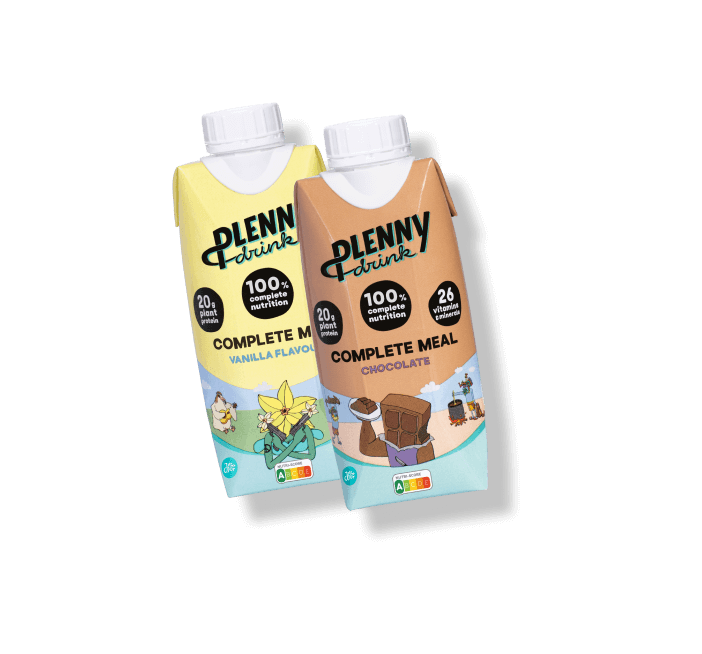












 Product added to cart
Product added to cart



